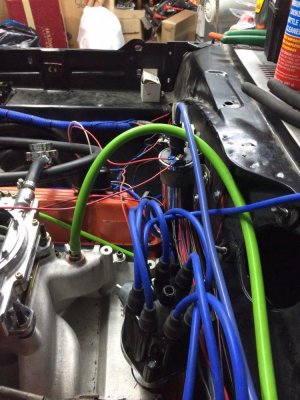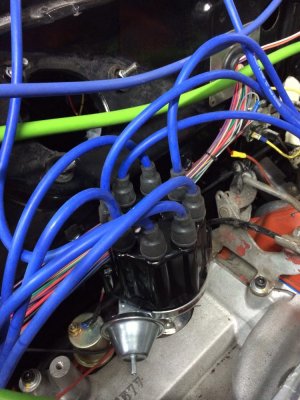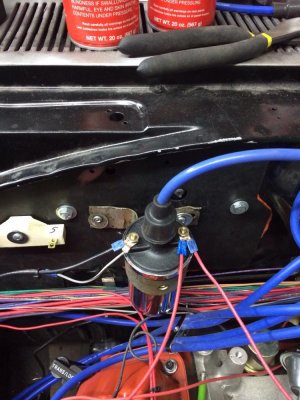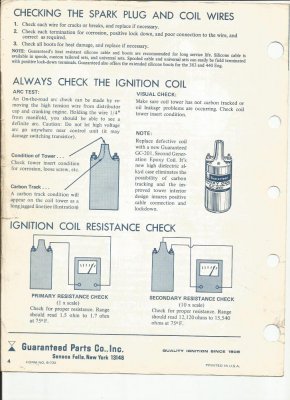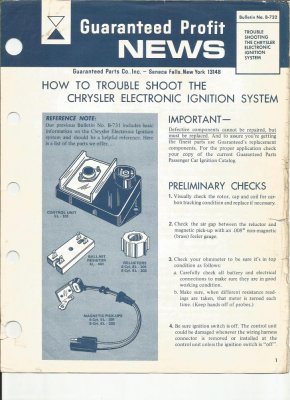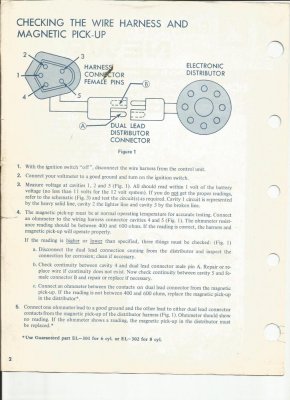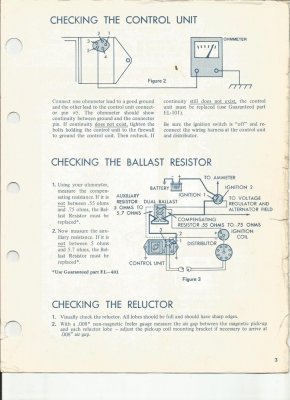That's on the negative side it's the tachometer . The red wires are to the dizzy and the jumper to the battery.
This looks like the present problem: why is the jumper to the battery going to the same side of the coil as the wire to the distributor? That is AFU....
For the testing suggested, the only wires to the coil should be:
1. Jumper from battery to coil+ (make this jumper wire so you can disconnect it like the ignition switch so it is not hot all the time)
2. Wire from distributor to coil -
Let's back up even further and test just the coil:
- Remove the tach wire for now
- Wire up coil with battery junmper to coil + and nothing to coil -
- Make up another wire jumper and ground one end to battery -
- Place the coil spark wire near ground with about a 1/4" gap
- Touch the ground jumper to coil - and then remove (But don't be touching the bare end of the wire!)
- Remove the ground jumper from coil - and look for a good spark at that moment
- Each time you touch and disconnect the ground jumper to coil - you shoudl see a good spark; you are simulating what the distributor and/or the control module are doing to create a spark
If this is good, then your coil is good.
Now:
- Disconnect the battery jumper from coil + and reconnect the wire from the ignition switch to coil +; DON'T have anything else connected (NO tach wire). NOTE: For your system with no ballast, you have to have 2 of the original ignition system wires going to coil +; you need both the dark blue wire that went alone to one end of the ballast AND the brown wire that connected to the other end of the ballast going to coil +. If you have a stock type harness, you can achieve this by simply inserting a wire jumper where the ballast used to go.
- Turn the ignition switch to RUN (not START) and see if there is near to 12v at coil +
- Then check to see if you have 12V at the coil+ when the key is in START (it will drop some while the starter is cranking)
- If you don't have close to battery voltage in both case, then you probably have a corrosion problem in the bulkhead connectors.
Let us know how all this goes.

